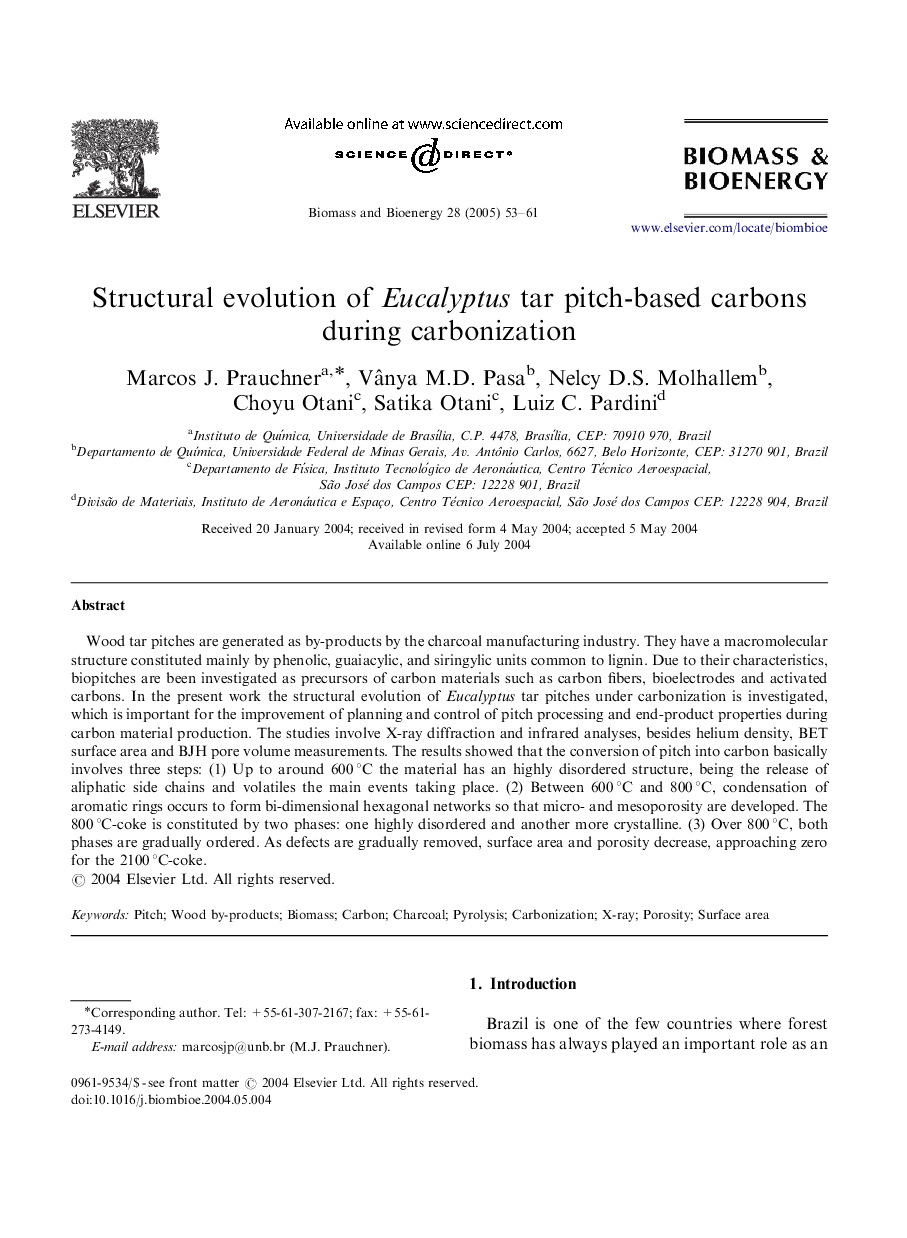| Article ID | Journal | Published Year | Pages | File Type |
|---|---|---|---|---|
| 10393897 | Biomass and Bioenergy | 2005 | 9 Pages |
Abstract
Wood tar pitches are generated as by-products by the charcoal manufacturing industry. They have a macromolecular structure constituted mainly by phenolic, guaiacylic, and siringylic units common to lignin. Due to their characteristics, biopitches are been investigated as precursors of carbon materials such as carbon fibers, bioelectrodes and activated carbons. In the present work the structural evolution of Eucalyptus tar pitches under carbonization is investigated, which is important for the improvement of planning and control of pitch processing and end-product properties during carbon material production. The studies involve X-ray diffraction and infrared analyses, besides helium density, BET surface area and BJH pore volume measurements. The results showed that the conversion of pitch into carbon basically involves three steps: (1) Up to around 600 °C the material has an highly disordered structure, being the release of aliphatic side chains and volatiles the main events taking place. (2) Between 600 °C and 800 °C, condensation of aromatic rings occurs to form bi-dimensional hexagonal networks so that micro- and mesoporosity are developed. The 800 °C-coke is constituted by two phases: one highly disordered and another more crystalline. (3) Over 800 °C, both phases are gradually ordered. As defects are gradually removed, surface area and porosity decrease, approaching zero for the 2100 °C-coke.
Related Topics
Physical Sciences and Engineering
Chemical Engineering
Process Chemistry and Technology
Authors
Marcos J. Prauchner, Vânya M.D. Pasa, Nelcy D.S. Molhallem, Choyu Otani, Satika Otani, Luiz C. Pardini,
